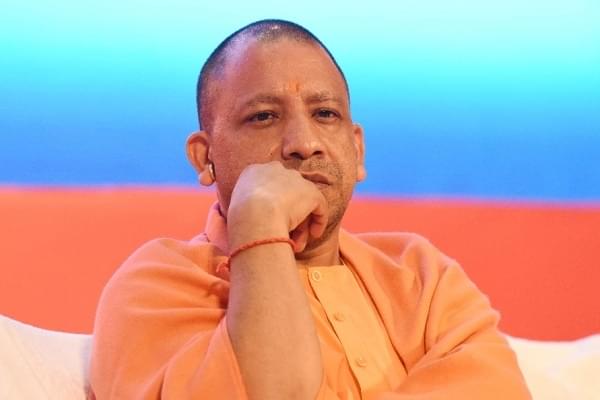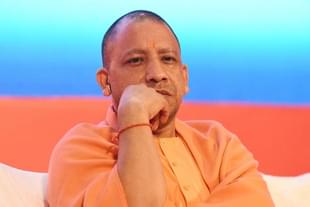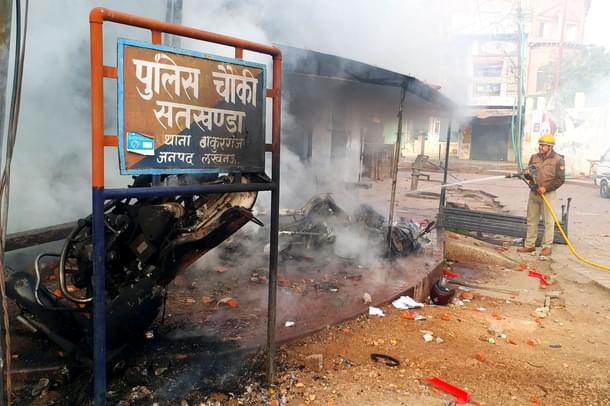Politics
In Line With The Law: Why UP Government Is Right In Asking Anti-CAA Rioters To Pay Up
Vaibhav Chadha and Ayush Anand
Jan 03, 2020, 02:11 PM | Updated 09:59 PM IST
Save & read from anywhere!
Bookmark stories for easy access on any device or the Swarajya app.


Recently, there was a lot of hue and cry over the action taken by the Uttar Pradesh government to recover the damages caused to public and private property during the protests against Citizenship Amendment Act (CAA) and National Register of Citizens (NRC) in the state. Some claimed it to be targeting a particular community while others claimed that it was an act of ‘revenge’ by the Chief Minister. This article focuses on the legality of actions taken by the UP government for recovering the damages.
India’s Prevention of Damage to Public Property Act, 1984 stipulates that it is an offence to damage public property, and imprisonment for damaging public property ranges between a minimum of six months and 10 years depending on the gravity of the act committed.
Issues related to violence causing damage to public and private property came before Supreme Court in ‘Destruction of Public & Private Properties, In Re, (2007) 4 SCC 474’. The court took suo motu cognisance of the riots causing damage to public and private property that took place in Haryana, Rajasthan, UP and Delhi after a community was not included in the Schedule Tribe category.
The court appointed Dr Rajeev Dhavan, senior advocate, as amicus curiae in the matter and he submitted to the court “even if there may be a right to protest in some cases, that does not give licence to anybody to destroy properties and/or indulge in acts of vandalism.”
The court directed the directors general of police of Haryana, Rajasthan and UP, and Delhi police commissioner to file affidavits on the action that had been taken so far and the measures proposed.
In 2009 came another judgement of Supreme Court ‘Destruction of Public & Private Properties v. State of A.P., (2009) 5 SCC 212”. The court appointed two committees, one was headed by former Supreme Court judge Justice K T Thomas and the other was headed by Fali S Nariman, senior advocate. The other members of the committee headed by Justice K T Thomas were senior advocate K Parasaran, solicitor general and a few other senior government officials. While the committee headed by F S Nariman included editor-in-chief of The Indian Express, The Times of India and Dainik Jagran, Prannoy Roy of NDTV, solicitor general, amicus curiae and a few senior government officers.
The Supreme Court while accepting recommendations made by Justice K T Thomas committee as “wholesome” proceeded to lay down guidelines setting out the need to prohibit all weapons in demonstrations and also pointed towards videography of such incidents. In UP, incidents of firing on police personnel and burning of police post came up, which were completely against the guidelines.
F S Nariman committee recommended that the persons causing damage should be considered “strictly liable” (para 13). Further, it recommended that liability to be imposed on those accused of damaging and destroying public as well as private property, should be intended to punish such rioters and damages imposed on them should be such that would “deter” general public from indulging in same acts in future (para 14).
It can be said here that the action taken by the UP government to make the rioters pay for the loss caused to the public and private property somehow reflects the principle recommended by F S Nariman committee, which were accepted by the court, to “deter” people from repeating similar violent acts in the future.
Supreme Court also laid down guidelines for assessment of damages in the absence of legislation (Para 15). The court in framing guidelines set out the application of “absolute liability” and did not restrict it to “actual perpetrators” of the offence but extended it to include “organisers” of such events.
UP Police arrested many Popular Front of India (PFI) members, who were behind the violence and were instigating the mob in the name of protests against CAA. These guidelines laid down by Supreme Court would allow government to recover damages even from such persons who were organising the events that lead to mob violence in UP.

For effective implementation of guidelines laid down by Supreme Court in ‘Destruction of Public & Private Properties v. State of A.P., (2009) 5 SCC 212’, Ministry of Home Affairs advised all states and Union Territories to take measures to prevent, investigate and prosecute all crimes within their jurisdiction in light of these guidelines through letter number 11034/01/2013 dated 6 May 2013.
‘Kodungallur Film Society v. Union of India, (2018) 10 SCC 713’ is a recent case related to mob violence in India. In this case, the court pointed towards the menace of mob violence and held it contrary to the accepted legal principles and mentioned the underlying duty of state to secure the citizens against such “illegal” acts (para 8).
The court then laid down some recommendations/directions needed in addition to those laid down in ‘Destruction of Public & Private Properties v. State of A.P., (2009) 5 SCC 212’ as follows:
Structural and preventive measures suggested were that “if any person is found with prohibited weapons” in protests/demonstrations, it shall be prima facie assumed that he had an intention to commit violence (para 20.2) and also responsibility of the authorities was fixed to arrest culprits at the earliest (para 20.8).
The remedy suggested by court to control imminent mob violence was that if the situation demands, by using the legal provisions, reasonable restrictions may be imposed on social media as well as internet-based communications (para 20.9).
The court then went ahead to fix the liability of the person causing violence. The court said if a call to violence leads to destruction of property then person or group responsible can be booked under Section 153-A, 295-A read with Section 298 and 425 of IPC, 1860 (para 20.11), and the person arrested for initiating or instigating such violence may be granted bail only if he deposits “quantified loss” that occurred due to such violence or by providing “security” for the “quantified loss” caused due to such a mob violence (para 20.13).
Regarding compensation, court stated the ones responsible for violence should be made liable to compensate those who suffered due to it (para 20.19) and the compensation should be in respect to both public and private properties (para 20.21).
In backdrop of these judgements of Supreme Court, PDPP Act and letter of Ministry of Home Affairs to states/UTs in 2013, actions of UP government from curbing Internet, to arresting rioters and making them pay for damages prima facie do not appear to be violative of any constitutional right in view of the guidelines laid down.
In wake of “yellow vest” protests, in April 2019 French President Emmanuel Macron signed “anti-rioters bill” into law that makes concealing face at protests and demonstration, an offence punishable with a year in prison and imposes a fine of 15,000 euros (approximately Rs 1,197,000).
Many protesters of CAA and NRC concealed their faces and participated in rioting. Should India take a lesson from another democracy like France and enact similar law in India, remains another question.
Vaibhav Chadha and Ayush Anand are advocates practising in the Supreme Court of India.





